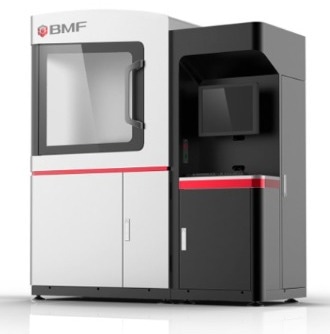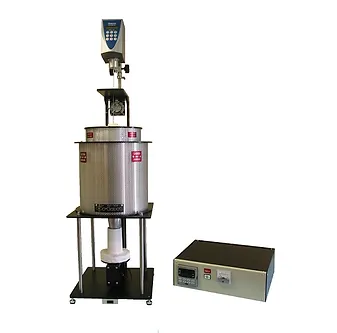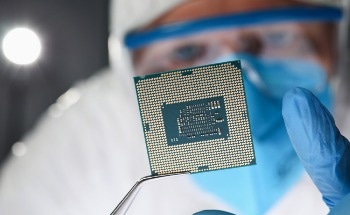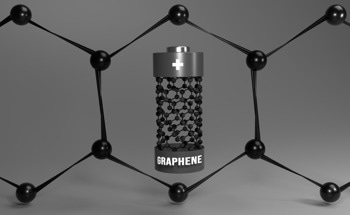Researchers around the world are on a mission to relieve a bottleneck in the clean energy revolution: batteries. From electric vehicles to renewable grid-scale energy storage, batteries are at the heart of society's most crucial green innovations-;but they need to pack more energy to make these technologies widespread and practical.
Now, a team of scientists led by chemists at the U.S. Department of Energy's (DOE) Brookhaven National Laboratory and Pacific Northwest National Laboratory (PNNL) has unraveled the complex chemical mechanisms of a battery component that is crucial for boosting energy density: the interphase. Their work published today in自然纳米技术。
DOE's Battery500 Consortium Zeroes-in on Lithium Metal Anodes
Many electronics, including smartphones and even electric vehicles, currently rely on conventional lithium-ion batteries. While lithium-ion batteries have become common due to their high efficiency and long lifespan, these batteries face challenges in more demanding applications, such as powering electric vehicles over long distances.
为了为电动汽车建造更好的电池,几家国家实验室和美国能源部赞助的大学的研究人员组成了一个称为Battery500的财团。在PNNL的带领下,该财团旨在使电池的能量密度为每公斤500瓦小时;这是当今最先进的电池的能量密度的两倍以上。为此,团队专注于锂金属电池。尽管锂离子电池依靠石墨阳极,但这些电池使用锂金属阳极。
Lithium metal anodes provide a much higher energy density than graphite anodes, but there are trade-offs. One of the biggest challenges scientists currently face is finding a way to stabilize the anode as the battery charges and discharges.
In search of such a method, scientists at Brookhaven Lab and PNNL led an in-depth study on lithium metal batteries' solid-electrolyte interphase. The interphase is a chemical layer formed between the anode and the electrolyte as a battery charges and discharges. Scientists have learned that the interphase is the key to stabilizing lithium metal batteries, but it is a very sensitive sample with convoluted chemistry, making it difficult to study and, therefore, difficult to fully understand.
“The interphase influences the cyclability of the whole battery. It's a very important, but elusive system,"said Brookhaven chemist Enyuan Hu, who led the study.“Many techniques can damage this small, sensitive sample, which also has both crystalline and amorphous phases."
The scientific community has conducted many studies using a variety of experimental techniques, including cryo-electron microscopy, to better understand the interphase-;but the picture is still far from being clear and complete.
“A comprehensive understanding of the interphase provides the foundation for building an effective interphase,"said PNNL scientist Xia Cao, who co-led the study and led the development of the electrolyte.“电池500联盟强烈鼓励合作。我们一直在与Brookhaven实验室进行许多科学项目,尤其是了解相间的合作。”
为了深入研究相间的复杂而难以捉摸的化学反应,该团队转向了一种称为国家同步灯源II(NSLS-II)的独一无二的工具。
NSLS-II Shines Light on Interphase Chemistry
NSLS-II is a DOE Office of Science User Facility at Brookhaven Lab that generates ultrabright x-rays for studying the atomic-scale makeup of materials. Hu and colleagues have been leveraging the advanced capabilities of the X-ray Powder Diffraction (XPD) beamline at NSLS-II to make new discoveries in battery chemistry for many years. Building on their previous successes, the team returned to XPD to gather their most precise findings on the interphase yet.
“我们以前已经发现,高能量同步器X射线不会损坏相间样品," Hu said.“这非常重要,因为表征相间的最大挑战之一是样品对其他类型的辐射(包括低能X射线)高度敏感。因此,在这项工作中,我们利用了两种使用高能量的技术X射线,X射线衍射和配对分布函数分析,以捕获锂金属阳极相间中晶体和无定形相的化学分配。”
After cycling a lithium metal battery 50 times and harvesting enough interphase sample, the team disassembled the cell, scraped off a trace amount of interphase powder from the surface of the lithium metal, and directed XPD's high energy x-rays at the sample to reveal its convoluted chemistry.
“XPD是世界上少数能够进行这项研究的光束线之一,“said Sanjit Ghose, lead beamline scientist at XPD and a co-author of the study. "梁线为这项工作提供了三个优点:一个较小的吸收横截面,损坏样品较小;合并的技术,X射线衍射,以获取相位信息和配对分布功能,以获得真实空间信息;以及高强度光束,用于从痕量样本中传递质量数据。”
This unique combination of advanced x-ray techniques provided the team with a detailed chemical map of the interphase components-;their origins, functionalities, interactions, and evolutions.
“我们专注于相间的三个不同组成部分," said Brookhaven postdoc Sha Tan, first author of the paper.“First was lithium hydride and its formation mechanism. We previously discovered that lithium hydride existed in the interphase, and this time we identified the hydrogen source."
Specifically, the team identified that lithium hydroxide, which can be found natively in the lithium metal anode, is the likely contributor to lithium hydride. Controlling the composition of this compound will help scientists design an improved interphase with the highest performance possible.
“其次,我们研究了氟化锂,这对于电化学性能非常重要,发现它可以在低浓度电解质中大规模形成," Tan said.
以前,科学家认为,氟化锂只能使用依赖昂贵盐的高浓度电解质在电解质中形成。因此,这项工作提供了证据表明,更具成本效益的低浓度电解质可以在这些电池系统中表现良好。
“Third, we looked at lithium hydroxide to understand how it is consumed during battery cycling. These are all very new findings and important for understanding the interphase."
这些发现结合在一起,有助于对以前被忽视的相互之间的组件发光,并将为锂金属电池提供更准确,可控制的相间设计。
Moving forward, the team is continuing to contribute additional studies to the Battery500 consortium. Battery500 is currently in its second phase, which will continue through 2026.
This work was supported by DOE's Office of Energy Efficiency and Renewable Energy, Vehicle Technologies Office and DOE's Office of Science. Operations at NSLS-II are supported by the Office of Science.
布鲁克黑文国家实验室得到了美国能源部科学办公室的支持。欧洲杯线上买球科学办公室是美国物理科学基础欧洲杯线上买球研究的最大支持者,并正在努力应对当时最紧迫的挑战。有关更多信息,请访问Science.energy.gov欧洲杯线上买球
Source:https://www.bnl.gov/









 Compilation of the top interviews, articles, and news in the last year.
Compilation of the top interviews, articles, and news in the last year.